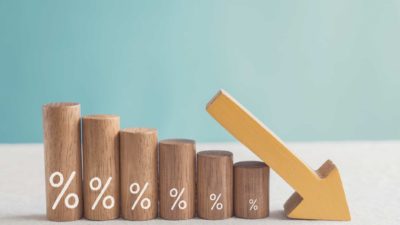1) The prospect of a Fed pivot again drove US shares higher overnight Monday, sending the Dow Jones Industrial Average Index (DJX: .DJI) and S&P 500 Index (SP: .INX) to their highest closes in more than a month.
The S&P/ASX 200 Index (ASX: XJO) index has followed suit, gaining 40 points or 0.60% in early Tuesday trade. The benchmark local index is now only down 8.4% over the past 12 months, putting US markets to shame.
You can thank your ASX coal, energy, and lithium stocks, if you are skilful and luckily enough to own them.
2) This global stock market rally (ex-China stocks) is coming on top of Wall Street last week notching up its best week since June as US bond yields fell from multi-year highs.
Much of this bullishness has been driven by a report in The Wall Street Journal which said the US Federal Reserve is likely to use its November meeting to debate "whether and how to signal plans to approve a smaller interest rate increase in December".
The prospect of a Fed Pivot – even as it is set to raise interest rates by another 75 basis points in early November – has finally given the bulls something to cheer about in this god-awful year for stock market investors.
It's anyone's guess as to whether this rally will stick.
It didn't – even when I thought it might – when the S&P 500 index jumped 17% from its June 2022 low only to crash all the way back down again by September 2022.
Although I'm not calling September the bottom of the market – because that would just be guessing – I am continuing to buy stocks, because I think many of them are just plain cheap.
3) That doesn't mean they can't go lower.
In the "batten down the hatches" corner, we have David Rosenberg on MarketWatch saying the S&P 500 crashes 30% lower from here, with US home prices also declining by 30%, and the US economy sinking into a recession.
Cheery soul, right?
All is not lost (yet), though, for stock market investors, with Rosenberg saying that since markets are cyclical, a new bull market for stocks, bonds and other risk assets should begin in 2024.
Only 15 more months of pain to go…
4) In the "believe" camp, we have the Chanticleer column in the AFR titled Is it time to believe in a Santa sharemarket rally? Excerpt:
After a torrid year marked by rising interest rates, savage asset price falls and bruising volatility, consensus is building around a year-end Santa rally for share markets.
The logic of such a rally is pretty simple. Investor sentiment is low, positioning is light (that is, investors are underweight equities in a way not seen since the global financial crisis) and the bad news has largely been priced in, including a 0.75 percentage point rate increase from the US Federal Reserve in November and a mild recession.
So any bit of good news – particularly hints that the Fed may be about to slow the pace of rate rises, or company earnings holding up – should give stocks a nice nudge.
5) In the "not entirely sold on the Fed Pivot" corner, we have Lisa Erickson at US Bank Wealth Management, quoted on Bloomberg as saying…
"We are still agnostic as to whether the Fed really is going to pivot or be at the peak of its hawkish cycle. If you look at the underlying data, inflation remains sticky, particularly in services ex-housing, which can often be more persistent. So given the Fed's dependence on the data, we're not clear exactly again, when the Fed may truly begin to slow down."
6) And in the "have faith, buy stocks now" corner, we have a bunch of fund managers who are licking their lips at a) the cheap prices on offer for selected stocks and b) the prospect of higher markets ahead, especially given the positive three, five and 10-year return profiles coming out of past bear markets.
In its most recent monthly update, the SGH Emerging Companies Fund said…
… we believe that once there are clear signals of the end of rate hikes, it will be bullish for both stocks and bonds. Consequently, we still expect equity markets to be significantly higher next year. Note share markets discount the future and will bottom before the economy.
For emerging companies, after the large share market decline, we continue to see plenty of opportunities at cheaper valuations and deals at more favourable pricing.
7) "Earnings risk" might soon become the new buzzword for the near-term direction of equity markets, and in particular, for individual stocks.
This week sees a host of large-cap stocks reporting earnings, including Apple, Microsoft, Alphabet and Amazon.
Here on the ASX in Australia, as AGM season approaches, we're already seeing quarterly updates, with the usual smattering of winners and sinners.
One of today's winners is Mader Group Ltd (ASX: MAD), the global leader in the provision of specialist technical services across multiple industries.
The company reported that FY23 has started strongly, delivering a 48% jump in first-quarter revenue, with its nascent North American business growing in momentum.
Favourable Q1 results and client demand across multiple sectors have provided Mader with the confidence to upgrade FY23 financial guidance.
Such language is usually music to the ears of investors. On this occasion, in early Tuesday trade, the Mader share price is largely flat, perhaps a nod to its already lofty valuation, at around 20 times forecast earnings before interest, tax, depreciation, and amortisation (EBITDA).
Still, quality doesn't come cheap.
"Our goal is to find outstanding businesses at sensible prices, not a mediocre business at a bargain price." – Warren Buffett









